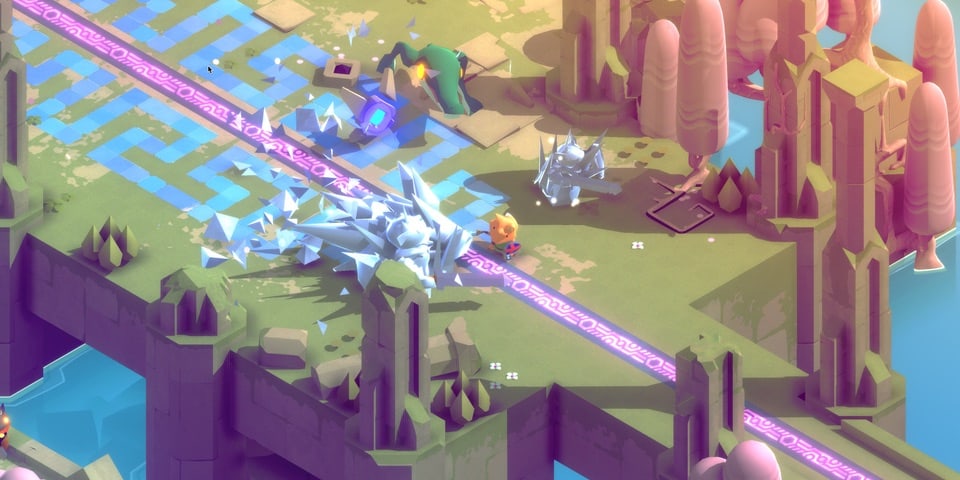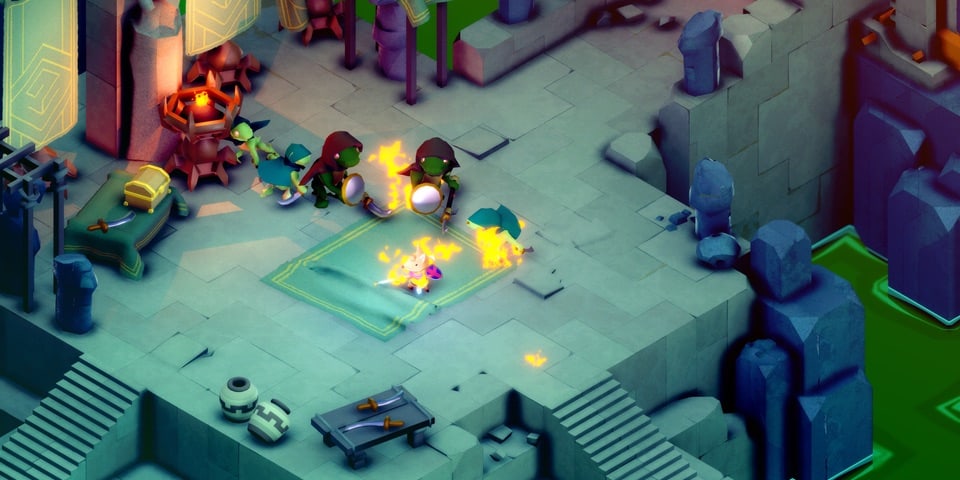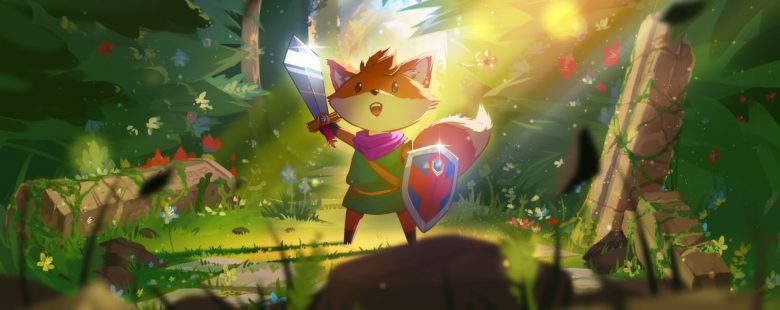It feels like we’ve been waiting a long time to play Tunic, and that’s probably because we have. Originally announced way back in 2017 as Secret Legend, the clear influence of Nintendo’s Zelda series immediately caught my attention, especially alongside the gorgeous isometric graphics and cute player character. After five long years, Tunic has finally been released and while I initially played with a mixture of excitement and apprehension, I can happily say that it more than lives up to my internalised hype. Replace the fox with an elf and this could easily stand up as a genuine entry in Link’s adventures.
First things first, Tunic is not just being compared to Zelda games, but to the Souls series as well. There are certainly echoes of FromSoftware’s legacy here, but many of them are a result of their games owing a huge debt to Zelda too. Most obviously, Tunic has challenging combat with dodge rolls and a rechargeable stamina bar. You rest at shrines that replenish your health, but also respawn enemies (though not bosses). You also have health potions that are refilled upon resting and the environment is designed around shortcuts and backtracking. It is pretty apparent from this superficial comparison that Tunic is at least Souls-adjacent, but there is also the heart of an old school adventure game beating beneath this exterior.
The visual styling of Tunic is absolutely stunning. The isometric view helps it to stand out from the many other action adventure games out there, but the most impressive thing is how beautifully the world is designed. Areas are truly distinct and lighting effects really make everything pop. It would have been easy for Tunic to feature a pixel art aesthetic, but the chunky polygonal characters and environment models make the whole experience an absolute joy. This approach is combined with some equally excellent music, with a mixture of ambient tunes and pumping synth depending on location and action.

The storyline of Tunic is one of the most obvious nods to the influence of Zelda.Your nameless fox is washed up on a beach and has to venture out to seek a weapon and find out their place in the world. The story itself is presented in a mysterious and vague way that leans conventional tropes and cliches, but wraps them up in a wonderfully innovative way through the use of a player manual.
This manual is one of the most interesting gaming mechanics I’ve encountered in a long while, as you construct it by finding pages within the game world. Working almost like an in-game wiki, much of the text is in a made up script until you make discoveries throughout game that reveals its meaning. There are hints, clues, and complex riddles to be found if you really look in detail at each page, with some even requiring the entire set to be collected (which you’ll need to do if you want to unlock the game’s true ending).

Tunic is pretty equally split between combat and exploration. The isometric viewpoint is used to deliberately obscure ladders and secret paths so you have to really scour the environment to find your way around. This can be frustrating at first, especially with the lack of clear signposting leading to lots of aimless wandering, but once you get a feel for the game’s design it becomes a genuine joy to work out how everything fits together.
Using the lock on button to shift the camera’s view can help to reveal some secrets, but in the main it’s worth just looking behind everything you possibly can. As the game progresses you’ll unlock a hook shot and a dash that opens up the world even more and by the end you’ll be zipping around at high speed hoovering up the last chests and secrets.

Combat is very deliberate and challenging with a stamina bar and the need to play defensively. There is a welcome accessibility menu that provides the option to switch off the stamina mechanic for those who want an experience that’s closer to Zelda than Dark Souls, and there’s even a no fail option if the combat becomes a real obstacle. These options are a fantastic addition as they highlight that the combat is only one part of the game’s appeal – in fact this offers up a potential solution to the perennial ‘should Souls games have an easy mode?’ debate.





